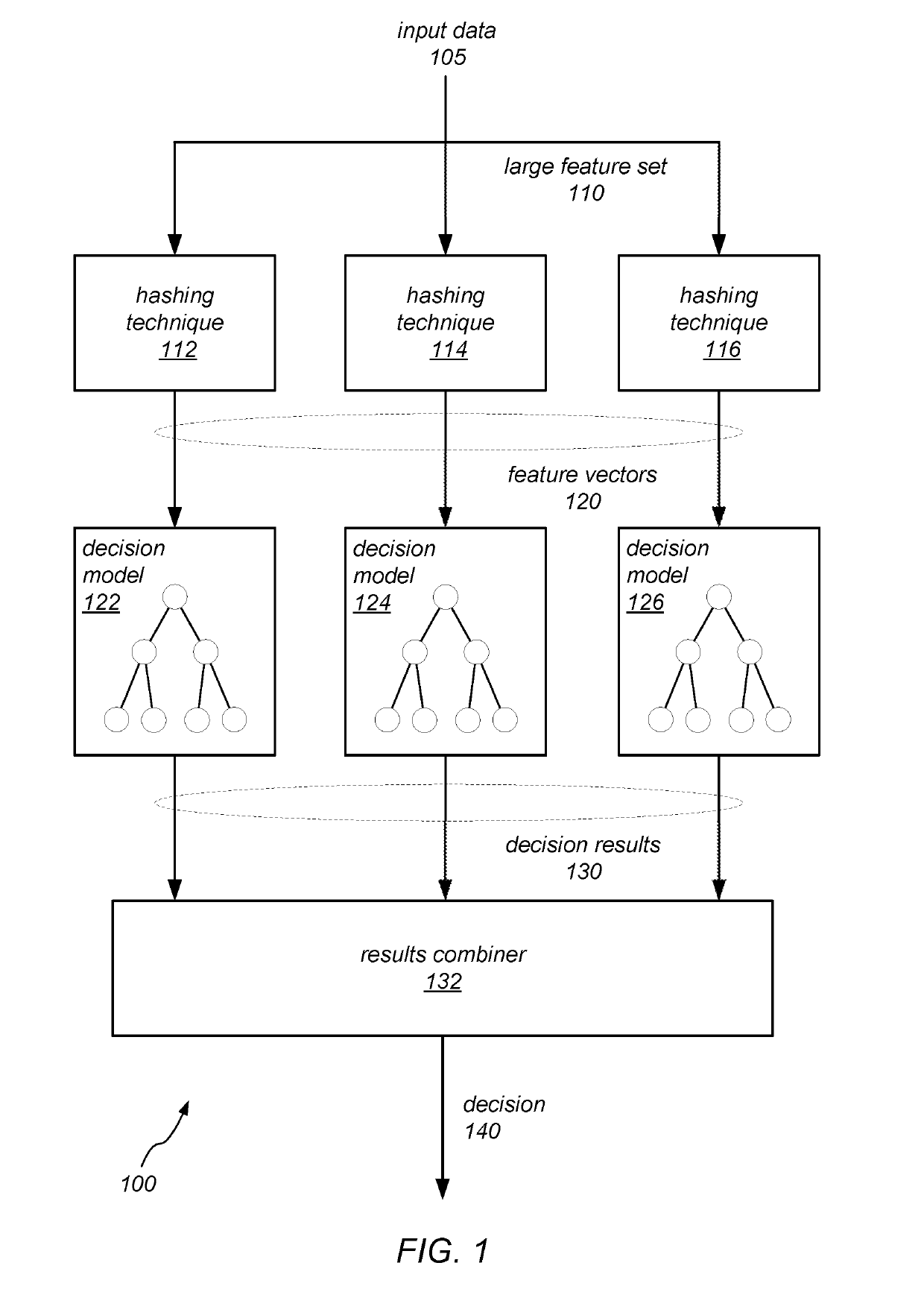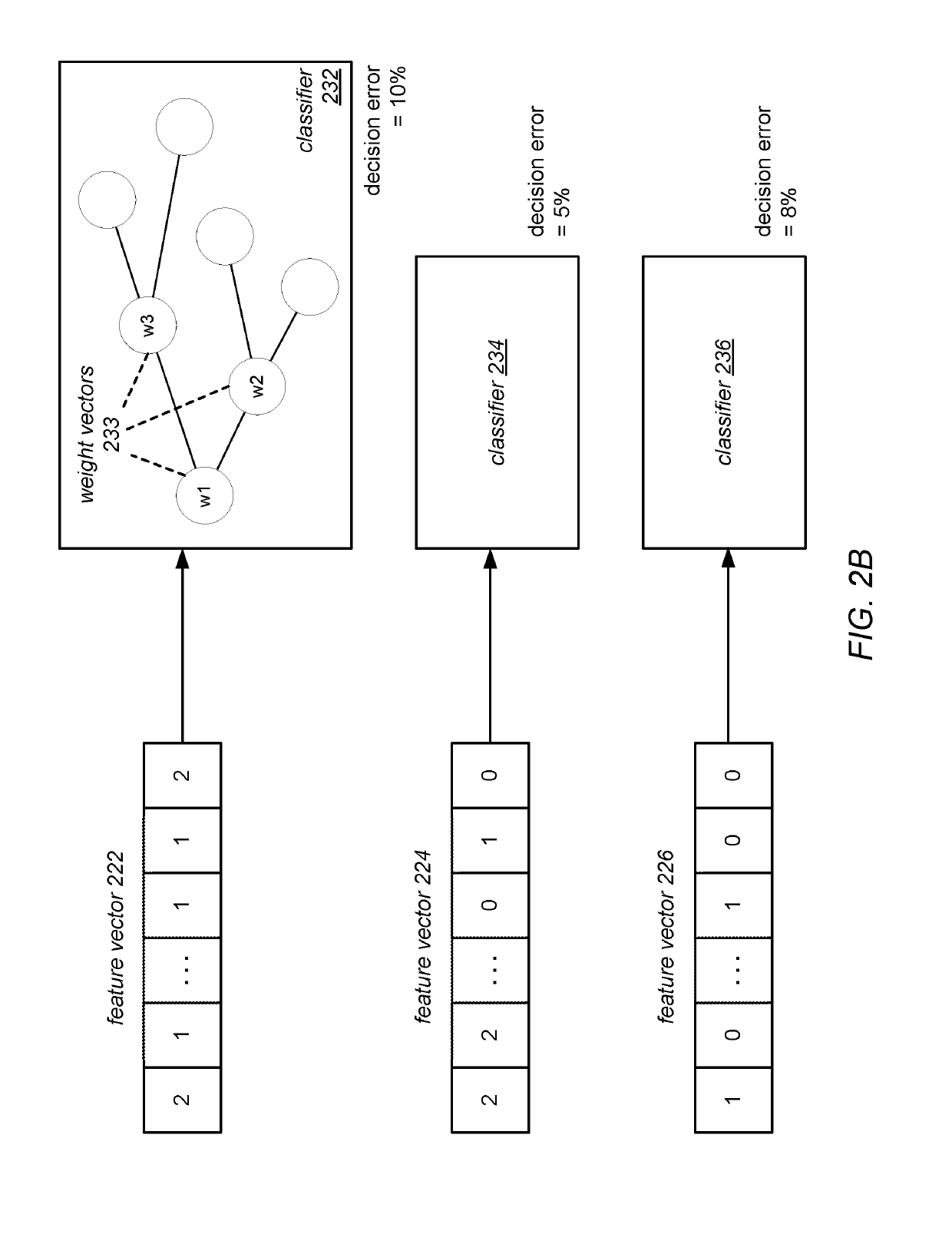Ensembled Decision Systems Using Feature Hashing Models
a decision system and feature hashing technology, applied in the field of machine learning and machine learning models, can solve the problems of reducing the complexity of the resulting decision system, limiting the complexity of the individual decision model, and reducing the computing resource requirements both during training, so as to reduce the dimensionality of the feature space of the model, reduce any errors, and save processing power and memory usage
- Summary
- Abstract
- Description
- Claims
- Application Information
AI Technical Summary
Benefits of technology
Problems solved by technology
Method used
Image
Examples
Embodiment Construction
[0018]FIG. 1 is a block diagram illustrating an ensembled decision system using multiple decision models employing feature hashing, according to some embodiments disclosed herein. As illustrated, the decision system 100 receives input data 105 and makes a decision 140 based on the input data. The decision system 100 may be a machine trained system that is built using machine learning techniques. Depending on the embodiment, decision system 100 may be used in a variety of contexts to make decisions based on input data. For example, in some embodiments, the input data 105 may represent a document, and the decision 140 may comprise a classification of the document based on its subject matter. In some embodiments, the input data 105 may be the pixels of an electronic image, and the decision 140 may indicate object that are recognized in the image. As another example, in some embodiments, the input data 105 may represent elements of a patient's medical history and symptoms, and the decis...
PUM
 Login to View More
Login to View More Abstract
Description
Claims
Application Information
 Login to View More
Login to View More - R&D
- Intellectual Property
- Life Sciences
- Materials
- Tech Scout
- Unparalleled Data Quality
- Higher Quality Content
- 60% Fewer Hallucinations
Browse by: Latest US Patents, China's latest patents, Technical Efficacy Thesaurus, Application Domain, Technology Topic, Popular Technical Reports.
© 2025 PatSnap. All rights reserved.Legal|Privacy policy|Modern Slavery Act Transparency Statement|Sitemap|About US| Contact US: help@patsnap.com



